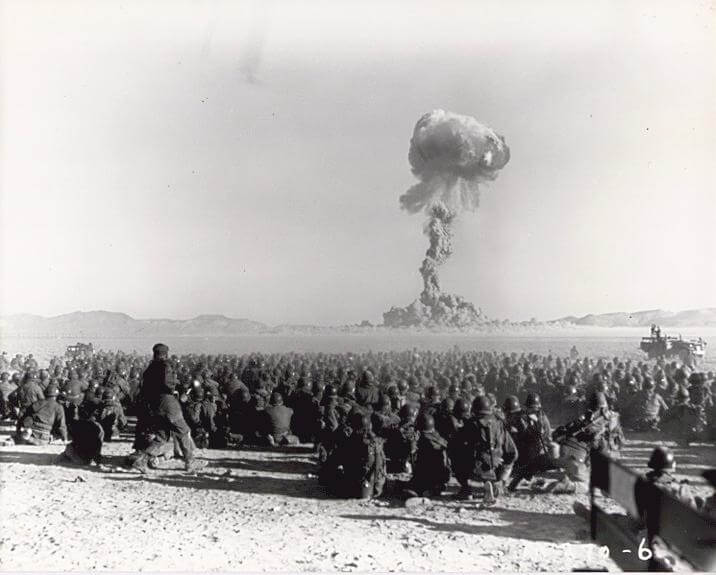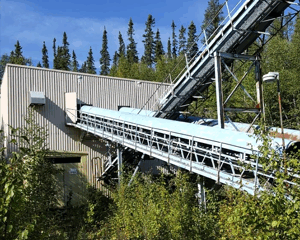Politics
U.S. Plans Resumption of Nuclear Testing, Shifting Decades of Policy

The United States is set to resume underground nuclear testing, a significant shift from its policy of abstention since September 1992. This announcement, made by former President Donald Trump on October 30, 2023, reverses decades of reliance on comprehensive science-based stockpile stewardship managed by the Department of Energy and its National Nuclear Security Administration (NNSA). The intent behind this change appears to be a response to advancements in nuclear capabilities by both Russia and China.
While neither Russia nor China has conducted nuclear tests in recent decades, both countries have made notable advancements in their nuclear arsenals. The Comprehensive Nuclear Test Ban Treaty, which has not yet entered into force, has established a de facto international norm against nuclear testing. Russia’s last nuclear test, conducted in 1990, occurred during the Soviet era, while nations such as Pakistan, China, and France concluded their final tests between 1996 and 1998. The Democratic People’s Republic of Korea (DPRK) remains an outlier, having executed six tests from 2006 to 2017.
The implications of resuming nuclear testing by the United States could be profound, potentially prompting other nuclear states to follow suit in pursuit of strategic parity. Once initiated, halting nuclear tests has proven to be a considerable challenge. The United States conducted a continuous series of tests for almost fifty years, from 1945 to 1992, with only a brief hiatus in the late 1950s. A renewed testing program risks undermining the global nonproliferation regime and contradicts the historical conclusion drawn by leaders such as Ronald Reagan and Mikhail Gorbachev that nuclear war cannot be won and must never occur.
Questions arise about the specific implications of Trump’s announcement. As of 2023, the United States maintains a stockpile of 3,748 active and inactive warheads. While Trump’s social media post indicated that Russia ranks second and China third in terms of nuclear arsenal size, accurate figures for Russia’s stockpile remain elusive due to suspended data exchanges mandated under the New START Treaty. The U.S. Department of Defense projects that China will have over 1,000 warheads by 2030, reflecting a significant increase from its current count of more than 600 operational nuclear weapons.
The announcement raises further questions regarding the nature of “testing” and what “testing on an equal basis” means. If “testing” refers to underground detonations involving special nuclear materials, this would signify a major deviation from the current U.S. strategy of stockpile stewardship, which relies on experiments that do not achieve criticality. Additionally, the nuclear stockpiles of the United States, Russia, and China differ significantly, complicating the notion of equality in testing.
Trump stated that the testing process would begin “immediately.” Although the Department of Defense has been assigned this task, authority and expertise for conducting nuclear tests ultimately reside with the Department of Energy and its NNSA. Between 1957 and 1992, a total of 828 underground nuclear tests were performed at the Nevada Test Site, located approximately 105 kilometers northwest of Las Vegas. Conducting these tests required specialized drilling techniques and meticulous preparation to contain the nuclear reactions.
The expertise necessary for these tests has diminished significantly over the past three decades due to personnel retirements and a shift in focus toward simulation and sub-critical experimentation. Re-establishing a nuclear testing program would likely require substantial time and resources, especially given the constraints posed by the ongoing federal fiscal situation.
The prospect of renewed nuclear testing is particularly paradoxical, considering the current administration’s efforts to engage diplomatically with nuclear adversaries to mitigate conflict and reduce regional tensions. Resuming nuclear tests could exacerbate fears surrounding the use of nuclear weapons and provoke a new wave of proliferation among existing nuclear states and those contemplating nuclear capabilities.
To date, the United States has allocated over $30 billion this year to enhance its science-based stockpile stewardship program, maintaining the reliability and safety of its nuclear arsenal without conducting tests since 1992. The environmental consequences of past nuclear testing are well documented, with even underground tests generating residual radiological contamination that poses risks beyond the immediate vicinity of test sites.
Resuming nuclear tests would likely send a destabilizing message, undermining deterrence and escalating nuclear competition globally. A more effective course of action would be to bolster monitoring and forensic capabilities to detect and attribute any future nuclear tests unequivocally. As history has shown, the most powerful demonstration of nuclear capability is not to conduct a test at all.
-

 Lifestyle1 week ago
Lifestyle1 week agoSend Holiday Parcels for £1.99 with New Comparison Service
-

 Science2 months ago
Science2 months agoUniversity of Hawaiʻi Leads $25M AI Project to Monitor Natural Disasters
-

 Science2 months ago
Science2 months agoInterstellar Object 3I/ATLAS Emits Unique Metal Alloy, Says Scientist
-

 Science2 months ago
Science2 months agoResearchers Achieve Fastest Genome Sequencing in Under Four Hours
-

 Business2 months ago
Business2 months agoIconic Sand Dollar Social Club Listed for $3 Million in Folly Beach
-

 Politics2 months ago
Politics2 months agoAfghan Refugee Detained by ICE After Asylum Hearing in New York
-

 Business2 months ago
Business2 months agoMcEwen Inc. Secures Tartan Lake Gold Mine Through Acquisition
-

 Health2 months ago
Health2 months agoPeptilogics Secures $78 Million to Combat Prosthetic Joint Infections
-

 Lifestyle2 months ago
Lifestyle2 months agoJump for Good: San Clemente Pier Fundraiser Allows Legal Leaps
-

 Science2 months ago
Science2 months agoMars Observed: Detailed Imaging Reveals Dust Avalanche Dynamics
-

 Health2 months ago
Health2 months agoResearcher Uncovers Zika Virus Pathway to Placenta Using Nanotubes
-

 Entertainment2 months ago
Entertainment2 months agoJennifer Lopez Addresses A-Rod Split in Candid Interview









